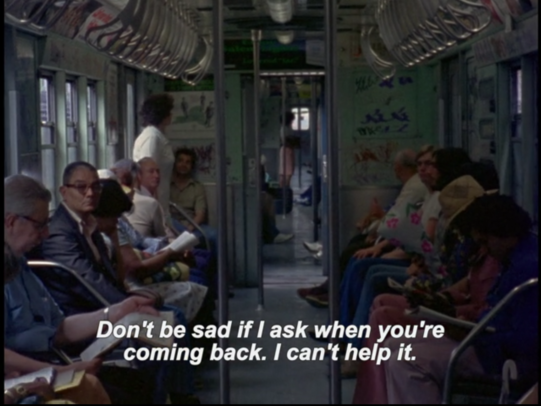Daughters of the dust
In an interview with Film Comment, Julie Dash was asked about her decision to structure her film Daughters of the Dust as a non-linear narrative. She explained how “in the culture, we’re not binary, we speak in rhythms and sensibilities, we’re circular.” In the same interview she resists the categorization of historical document, and describes the film as “a meditation – it’s a cinema of ideas and what-ifs and how-sos. It’s a conversation.”
We can feel the truth of this in the movie’s abundance of ideas and dream-like composition and pacing; languid, somewhat disassociated scenes that intermingle stories and identities and eras, yet always return to a shared history. The film centers the Gullah culture, which while unfamiliar to many people remains a quintessential American story. The pain of slavery as well as the perseverence of the spirit are present and immediate in this snapshot of Gullah life at the turn of the 20th century; woven into their cuisine and crafts, soaked into the very soil itself.
The tension of the story revolves around questions of identity, tradition and change – how to honor the past but survive the present. The opening scene finds two family members, Viola and Yellow Mary, returning home to Ibo Landing by boat. Each brings along a visitor who in some way represents the more modern world. Mary, the free spirit and outcast, is returning from the “big city” with her lesbian lover Trula. Viola is accompanied by the photographer Mr. Snead, a well-dressed man who wishes to document this Gullah alcove before the family leaves it behind. Snead is the director’s stand-in, the documentarian seeking to save a vanishing history. The movie is deeply personal for Julie Dash, and this is felt in its themes, its questions, the sensitivity of the photography and performances.
During the boat trip Mr. Snead introduces Mary and Trula to a new optical gadget – the kaleidoscope. “Kalos – beautiful. Eidos – form. Skopein – to view. If an object is placed between two mirrors, inclined at right angles, an image is formed in each mirror. Then, these mirror images are in turn reflected in the other mirror.”

Like a kaleidoscope, Daughters of the Dust contrasts a variety of angles against each other to create a beautiful whole. Like objects between two mirrors, all the characters reflect a past and a future, while also being part of a connected tapestry. The beautiful imagery of the film allows this tapestry to unfurl in an organic yet mythical way, creating an atmosphere of weighty peace and fatalism even as conflicts arise. Dash explains her intention as such: “I wanted to take the African-American experience and rephrase it in such a way that, whether or not you understood the film on the first screening, the visuals would be so haunting it would break through with a freshness about what we already know.” (Brouwer 1995) This is a movie about understanding who you are – a pursuit that feels more and more desperate and essential as society becomes more modern and detached.
Works:
Brouwer, Joel R. “Repositioning: center and margin in Julie Dash’s ‘Daughters of the Dust.’.” African American Review, vol. 29, no. 1, spring 1995, pp. 5+.
da Costa, Cassie. “Interview: Julie Dash.” Film Comment, 29 February 2016, https://www.filmcomment.com/blog/interview-julie-dash/.Daughters of the Dust. Directed by Julie Dash, Kino International, 1991.


